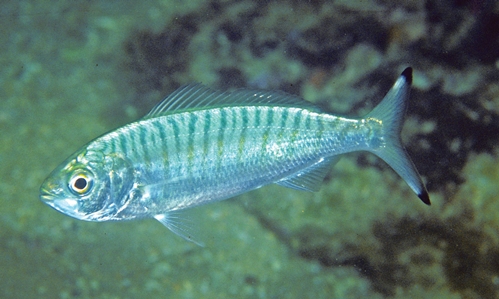General Description
Body robust, streamlined, edge of bone under eye with prominent serrations at all sizes; scales noticeably rough to touch. Dark olive-grey above, silvery-white below, with faint darker stripes on scale rows, dorsal fin with a dark margin, tail with a broad dark margin and obvious black fin tips. Juveniles with silvery-grey or golden bars on upper half of body, breaking up into spots in slightly larger individuals; fins with black speckles. To 41 cm.
Biology
The Australian Herring is frequently seen near piers, jetties, and along outer beaches of Port Phillip Bay, Victoria, during summer months. Individuals form large schools in shallow coastal waters. It is as very popular recreational angling fish.
Habitat
Free swimming in open coastal waters, moving close to beaches and into bays to feed; in depths of 0-50 m.
Open water
Distribution guide
Southern Australia.
Species Group
Depth
Shore (0-1 m)
Shallow (1-30 m)
Deep ( > 30 m)
Water Column
Max Size
41 cm
Commercial Species
Yes
Global Dispersal
Native to Australia
Conservation Status
- DSE Advisory List : Not listed
- EPBC Act 1999 : Not listed
- IUCN Red List : Not listed





